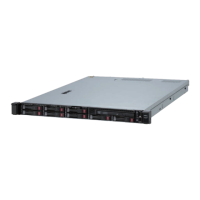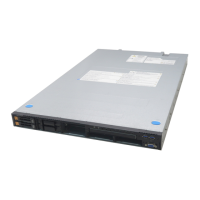Configuring Linux 2-17
Adding Internal Disks
Internal SCSI disks are mounted in slots 1 and 4 in standard configuration. You
can mount additional internal SCSI disks in paired slots 2 and 5, and paired slots
3 and 6.
Note: Be sure to add internal SCSI disks in pairs.
Use ftdiskadm to configure additional internal SCSI disks. The following is an
example of configuring additional internal SCSI disks in slots 3 and 6 by using
ftdiskadm:
# ftdiskadm
Command action
1 => SCSI
2 => RAID
3 => Environment
9 Quit
Command: 2
Command action
1 Status(Raid)
2 Status(All Disks)
3 Repair Disk
4 New Disks
5 Remove Half Disk
6 Remove Full Disks
9 <= RETURN
Command: 4
[New Disks]
* Which SCSI SLOT? [1-6] 3 (see Note 1)
* Input the LABEL [1-12 character(s)] extra (See Note 2)
Making the disk partition table: SLOT=3 SIZE=17343(MB)
* How many partitions? [1-12] 3 (see Note 3)
* Input the SIZE of partition 1 [1- 16318(MB)] 1024
* Input the SIZE of partition 5 [1- 15295(MB)] 2048
partition 6 14271
* Are you sure to create it? [y/n] y
Notes:
1. Specify a SCSI slot number with a disk inserted in the slot. At this time, another
disk must also be inserted in the slot paired with the specified one.
2. Enter the disk label if necessary. If the disk is used as a single partition, the value
entered as the disk label is used as is. If the disk is used divided into multiple
partitions, "entered-value_s<partition-number>" is used. You can change the disk
label later by using a command such as e2label.
3. Enter the number of partitions into which the disk is to be divided. Enter the size of
each partition in MB units. The size of the last partition is the remaining area,
which is automatically allocated. The partition number 1 is followed by 5, and the
subsequent numbers are assigned in ascending order. Since a disk of a specified
capacity is reserved for the last partition, only a value smaller than the actual disk
capacity can be entered. The actual capacity of a partition varies slightly
depending on the disk structure.
Finishing the above specification starts creating the RAID configuration. If no
problems occur, the creation of the RAID configuration is completed. To
confirm the RAID status, execute [Status Raid] in the above.

